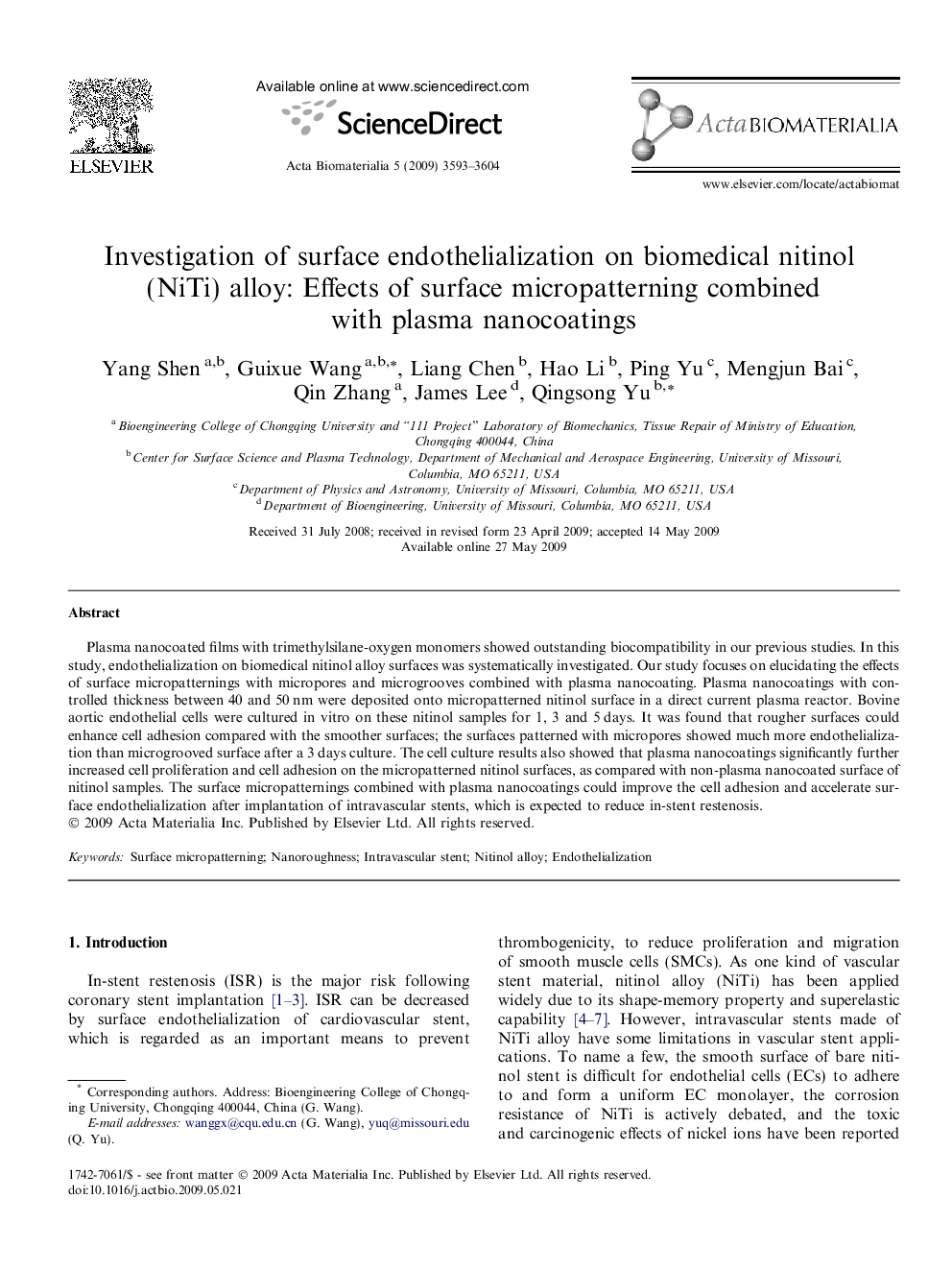| Article ID | Journal | Published Year | Pages | File Type |
|---|---|---|---|---|
| 1886 | Acta Biomaterialia | 2009 | 12 Pages |
Plasma nanocoated films with trimethylsilane-oxygen monomers showed outstanding biocompatibility in our previous studies. In this study, endothelialization on biomedical nitinol alloy surfaces was systematically investigated. Our study focuses on elucidating the effects of surface micropatternings with micropores and microgrooves combined with plasma nanocoating. Plasma nanocoatings with controlled thickness between 40 and 50 nm were deposited onto micropatterned nitinol surface in a direct current plasma reactor. Bovine aortic endothelial cells were cultured in vitro on these nitinol samples for 1, 3 and 5 days. It was found that rougher surfaces could enhance cell adhesion compared with the smoother surfaces; the surfaces patterned with micropores showed much more endothelialization than microgrooved surface after a 3 days culture. The cell culture results also showed that plasma nanocoatings significantly further increased cell proliferation and cell adhesion on the micropatterned nitinol surfaces, as compared with non-plasma nanocoated surface of nitinol samples. The surface micropatternings combined with plasma nanocoatings could improve the cell adhesion and accelerate surface endothelialization after implantation of intravascular stents, which is expected to reduce in-stent restenosis.
